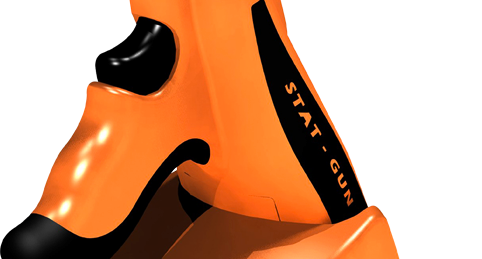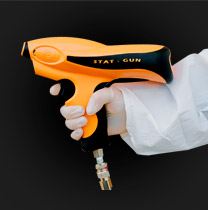What is Static?
Static is the invisible enemy of the perfect paint finish! You may be surprised to learn how many every day, profit draining problems static causes…
Why is it a problem?
Most people appreciate that static charge is a major cause of paint film contamination, however all these other problems can also be caused by static: Non-consistent laydown of metallic, blending/colour matching problems, un-even application of material, dark edges, patchiness.
Even the best painters in the cleanest booths can’t escape the problems which static can cause. Static rarely causes problems which cannot be fixed, however the problems must be overcome using extra time and materials, which in turn decrease productivity
Where does it come from?
Many everyday processes within a bodyshop can cause static build-up, including sanding, panel wiping, tacking, blowing off, masking and even the application of materials. The final preparation process of tacking is one of the highest generators of static electricity. All these procedures incorporate some type of contact and separation with the panel, whether it is physical contact or air contact.
How can I remove it?
The only way to remove static effectively throughout the painting process is to use ionised air. As the static forms in positive and negative charge, the positive and negative ions produced from the Stat-Gun neutralise the charge (positive neutralises negative & vice versa).
Eliminating the problems of static
Even Paint Coverage

Metallic Laydown

Dust & Dirt Inclusions

Panels that are statically charged form an electromagnetic field and, as the word magnetic indicates, attract any airborne particles from the surrounding area. A contaminated paint job requires time consuming nibbing and polishing. Once the static is neutralised, dust and dirt in the atmosphere is no longer attracted to the panel, and simply flows out through the booth exhaust filter.


